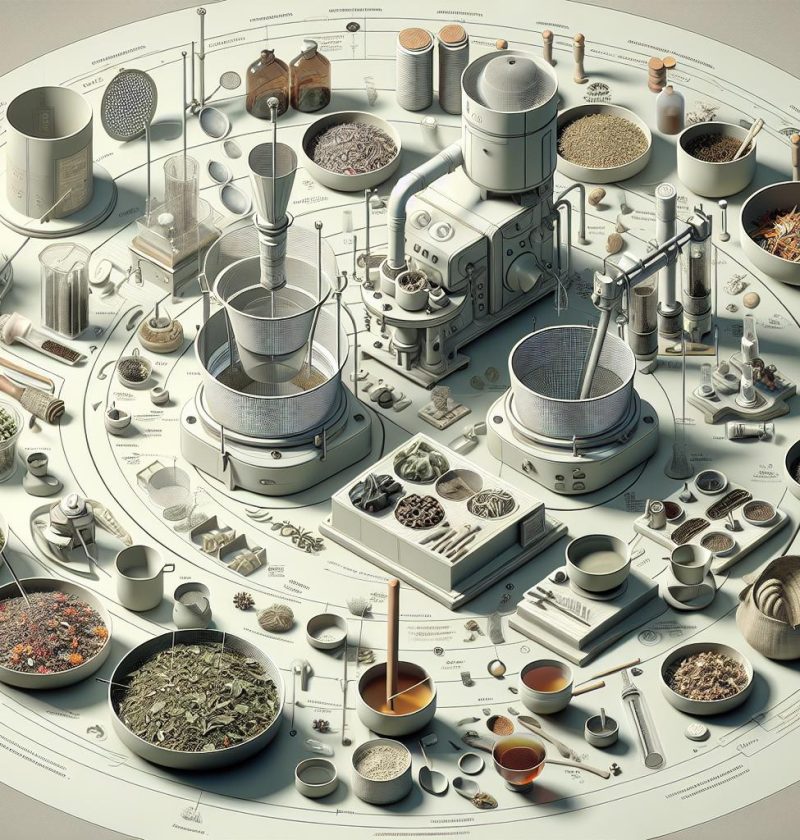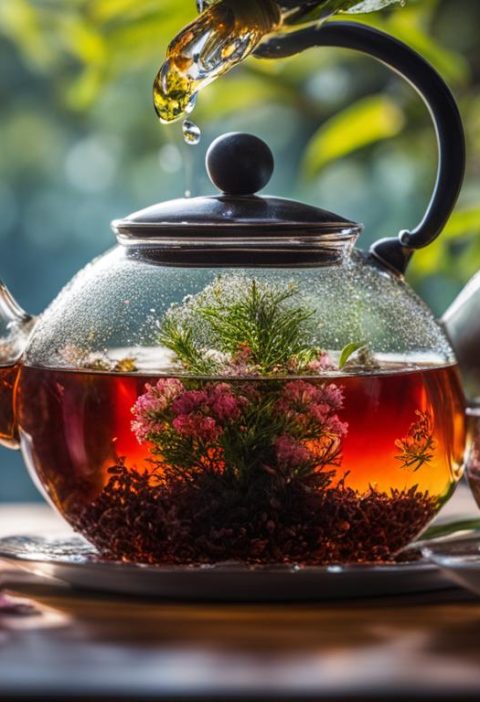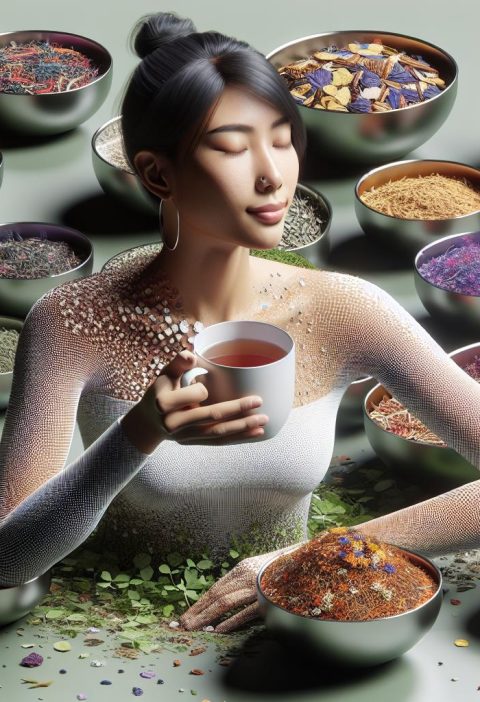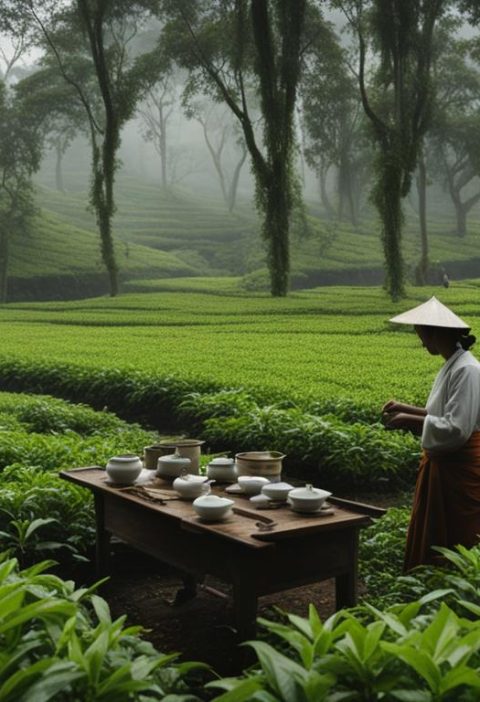So, you’re ready to dive into the art of crafting your very own tea blend. When it comes to creating a personalized tea mix, the possibilities are as vast as the flavors themselves. From soothing herbal infusions to robust black tea blends, the world of tea blending is yours to explore. Our journey begins with understanding the key components that make a tea blend truly exceptional.
First off, selecting the base tea is crucial. Whether you prefer the earthy notes of black tea, the delicate nuances of green tea, or the caffeine-free comfort of herbal tea, the base sets the foundation for your blend. Next, we’ll delve into the realm of flavorings and accents. Think dried fruits, aromatic spices, or fragrant flowers – these elements will add depth and complexity to your blend, elevating it to new heights. Stay tuned as we unlock the secrets to mixing the perfect cup of tea tailored to your unique taste preferences.
Understand the Base Tea Selection
When it comes to crafting the perfect tea blend, the foundation lies in selecting the right base tea. Whether you’re new to tea blending or a seasoned enthusiast, understanding the characteristics of different base teas is crucial for achieving a harmonious blend tailored to your preferences. Let’s dive into the specifics based on your expertise level:
For Beginners: Mastering the Basics
- Start with black tea as a versatile and robust base that pairs well with a variety of flavor profiles.
- Experiment with green tea for a lighter base with grassy notes that complement floral and citrusy flavors.
- Explore the world of herbal tea, which is caffeine-free and offers a blank canvas for creating caffeine-free blends.
For Intermediate Tea Blenders: Enhancing Your Blend
- Delve into oolong tea, a semi-oxidized tea with nuanced flavors ranging from floral to toasty.
- Consider white tea for a delicate and subtly sweet base that allows other flavors to shine.
- Blend rooibos or mate for a caffeine-free alternative with earthy or nutty undertones.
- Incorporate Pu-erh tea for a rich, earthy base that gains complexity with aging.
- Experiment with yellow tea for a rare and lightly oxidized base with a mellow flavor profile.
- Challenge your palate with aged white tea or aged oolong for intricate flavor profiles developed through aging.
Embrace the art of tea blending by selecting the perfect base tea to elevate your concoctions to new heights. The journey of creating personalized tea blends starts with understanding the nuances of each base tea and how it can harmonize with complementary flavors.
Explore a Variety of Flavorings and Accents

When it comes to elevating your tea blend, exploring a variety of flavorings and accents allows for endless creativity and customization. Whether you’re a beginner looking to dip your toes into the world of tea blending or an expert seeking new inspiration, there’s something for everyone to discover.
For Beginners: Mastering the Basics
- Start with common flavorings like citrus peels, mint leaves, or dried flowers to add freshness to your blends.
- Experiment with spices such as cinnamon or ginger for a hint of warmth and depth in your teas.
- Don’t forget about sweeteners like honey or agave to balance out the flavors in your blend.
For Intermediate Blenders: Enhancing Your Creations
- Dive into the world of herbs like lavender or lemongrass to introduce unique floral and citrus notes to your blends.
- Consider adding nuts such as almonds or coconut for a touch of richness and texture in your tea creations.
- Infuse your teas with vanilla beans or spices to create complex and intriguing flavor profiles.
- Experiment with rare and exotic ingredients like saffron or cardamom pods to craft truly one-of-a-kind tea blends.
- Age your teas with oak chips or barrels to develop rich and smoky undertones in your creations.
- Explore smoking techniques using tea leaves to infuse bold and distinctive flavors into your blends.
Experiment with Different Combinations
When it comes to crafting your perfect tea blend, experimentation is key. Mixing and matching various ingredients can lead to delightful discoveries in flavor profiles. Whether you’re a novice or an experienced tea blender, trying different combinations can elevate your tea-drinking experience. Here are some tips based on your expertise level:
For Beginners: Mastering the Basics
- Start simple with classic pairings like citrus peels or fresh mint leaves.
- Play around with fruit infusions such as berries or dried fruits for a sweet twist.
- Get comfortable with herbal additions like lavender or chamomile for a soothing blend.
For Intermediate Blenders: Enhancing Your Blend
- Experiment with spices like cinnamon, ginger, or cardamom for added warmth and depth.
- Introduce nutty flavors such as almond or hazelnut to create complexity.
- Consider floral notes like rose petals or jasmine for a fragrant and elegant touch.
- Delve into rare ingredients like saffron or butterfly pea flowers for unique hues and tastes.
- Age your tea blend with oak chips to develop rich undertones and complexity.
- Explore smoking techniques using tea leaves to infuse bold and distinctive flavors.
Tips for Mixing the Perfect Cup
For Tea Blending Beginners: Getting Started
- Start with simple ingredients like citrus peels and mint leaves.
- Experiment with basic flavor combinations.
- Gradually introduce spices and nuts for added complexity.
- Don’t be afraid to try different ratios to find what works best for you.
For Intermediate Tea Blenders: Elevating Your Blend
- Incorporate floral notes such as lavender or rose petals.
- Explore unique ingredients like saffron or butterfly pea flowers for a touch of luxury.
- Age your blends with oak chips to develop depth of flavor.
- Consider smoking techniques with tea leaves for a rich and aromatic profile.
- Experiment with rare and exotic ingredients for truly unique blends.
- Focus on balance and harmony between different elements in the blend.
- Fine-tune your blends based on brewing methods and steeping times.
- Continuously push the boundaries of tea blending to create one-of-a-kind flavors.
| Key Points |
|---|
| Start with simple ingredients |
| Gradually introduce complex flavors |
| Experiment with unique ingredients |
| Age blends with oak chips |
| Explore smoking techniques |
| Focus on balance and harmony |
| Fine-tune based on brewing methods |
| Push the boundaries of tea blending |
Conclusion
We’ve covered essential tips for beginners and intermediate tea blenders, guiding you from simple ingredients to rare finds. Remember to prioritize balance, harmony, and continuous experimentation to craft your signature tea blends. Start with citrus peels and mint leaves, then elevate your blends with spices, nuts, and floral notes. Don’t shy away from unique ingredients like saffron and butterfly pea flowers, or techniques like aging with oak chips and experimenting with smoking. Fine-tune your blends based on brewing methods and steeping times to create teas that push boundaries and delight your senses. Embrace the journey of tea blending with curiosity and creativity to unlock endless possibilities in your cup.






